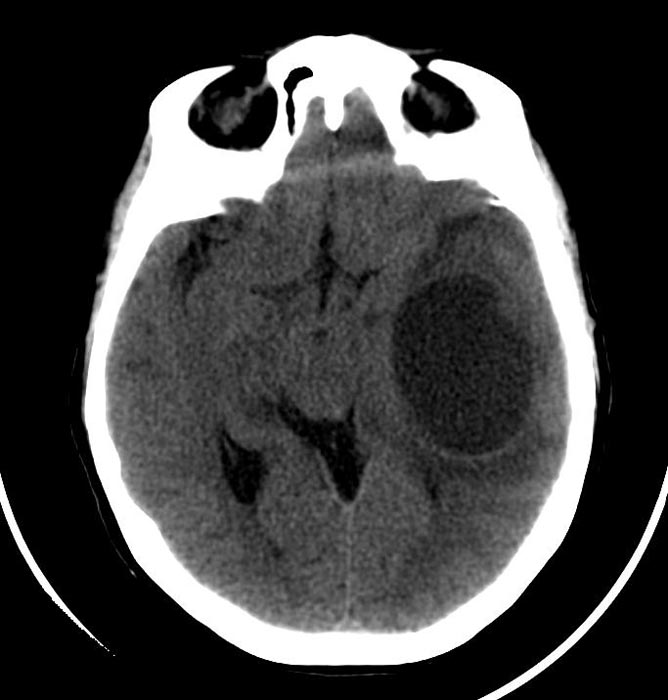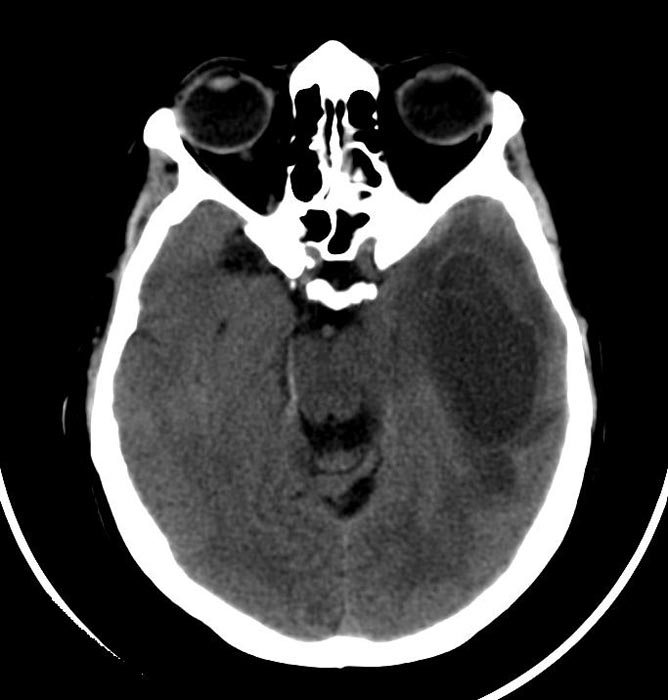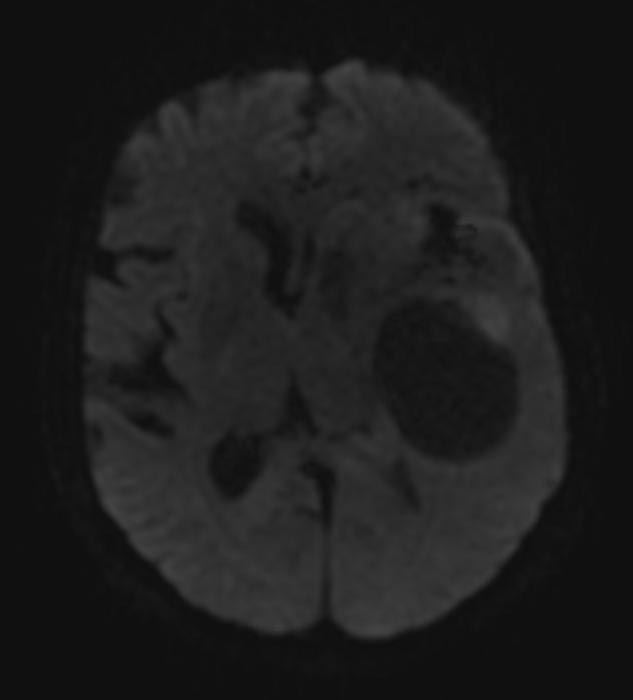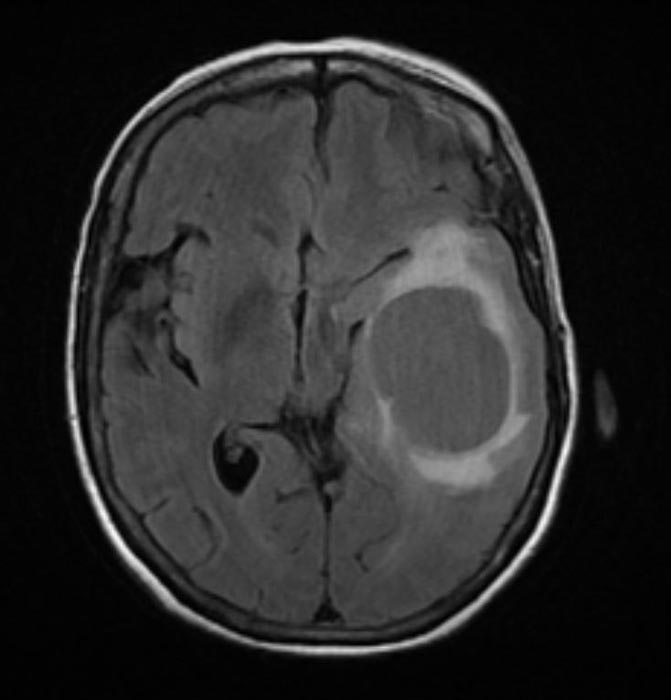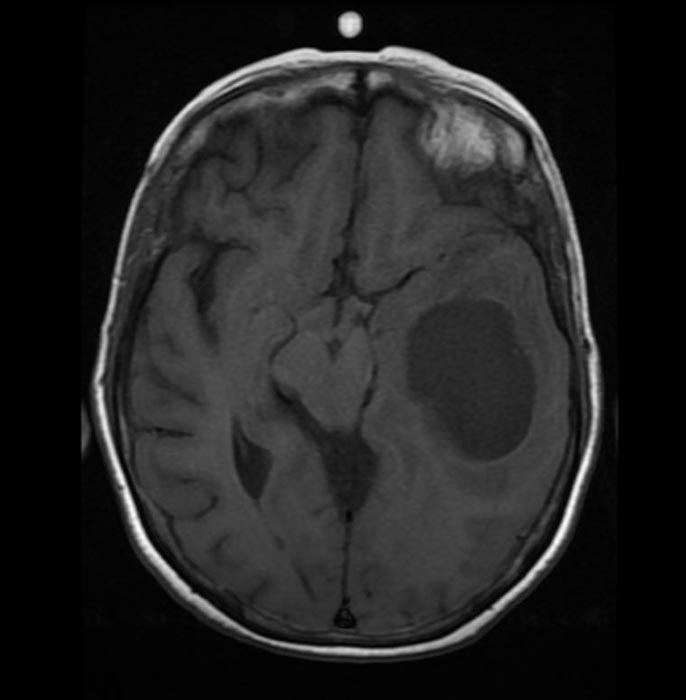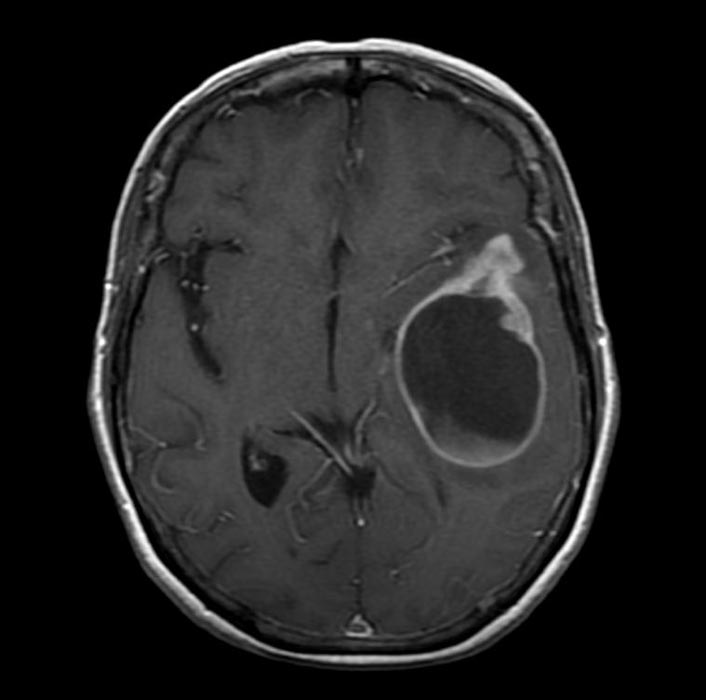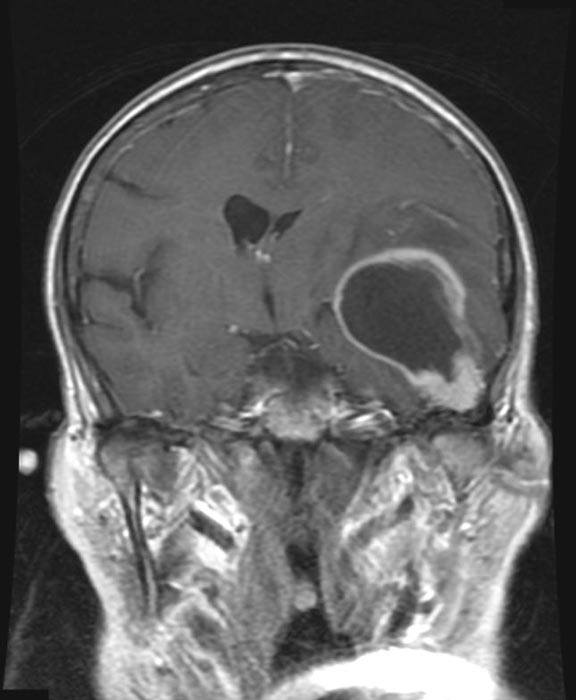Glioblastoma multiforme MRI: Difference between revisions
(→MRI) |
Marjan Khan (talk | contribs) No edit summary |
||
| Line 4: | Line 4: | ||
==Overview== | ==Overview== | ||
Brain MRI is helpful in the diagnosis of glioblastoma multiforme. On brain MRI, glioblastoma multiforme is characterized by a butterfly shaped mass, which is hypointense on T1-weighted MRI and hyperintense on T2-weighted MRI. | Brain MRI is helpful in the diagnosis of glioblastoma multiforme. On brain MRI, glioblastoma multiforme is characterized by a butterfly shaped mass, which is hypointense on T1-weighted MRI and hyperintense on T2-weighted MRI. | ||
==MRI== | ==MRI== | ||
Brain MRI is helpful in the diagnosis of glioblastoma multiforme. On brain MRI, glioblastoma multiforme is characterized by:<ref name=ddd>XYZ of glioblastoma multiforme. Dr Dylan Kurda and Dr Frank Gaillard et al. Radiopaedia 2015. http://radiopaedia.org/articles/glioblastoma</ref> | Brain MRI is helpful in the diagnosis of glioblastoma multiforme. On brain MRI, glioblastoma multiforme is characterized by:<ref name="ddd">XYZ of glioblastoma multiforme. Dr Dylan Kurda and Dr Frank Gaillard et al. Radiopaedia 2015. http://radiopaedia.org/articles/glioblastoma</ref> | ||
{| style="border: 0px; font-size: 90%; margin: 3px; width: 600px" align=center | {| style="border: 0px; font-size: 90%; margin: 3px; width: 600px" align="center" | ||
|valign=top| | | valign="top" | | ||
|+ | |+ | ||
! style="background: #4479BA; width: 200px;" | {{fontcolor|#FFF|MRI component}} | ! style="background: #4479BA; width: 200px;" | {{fontcolor|#FFF|MRI component}} | ||
| Line 44: | Line 44: | ||
*Absent dual rim sign | *Absent dual rim sign | ||
|- | |- | ||
| style="padding: 5px 5px; background: #DCDCDC;font-weight: bold" | | rowspan="3" style="padding: 5px 5px; background: #DCDCDC;font-weight: bold" |DWI/ADC | ||
|style="padding: 5px 5px; background: #F5F5F5;"| | | style="padding: 5px 5px; background: #F5F5F5;" | | ||
*Solid component | *Solid component | ||
:* Elevated signal on DWI is common in solid / enhancing component | :* Elevated signal on DWI is common in solid / enhancing component | ||
:* Diffusion restriction is typically intermediate similar to normal [[white matter]], but significantly elevated compared to surrounding vasogenic [[edema]] (which has facilitated diffusion) | :* Diffusion restriction is typically intermediate similar to normal [[white matter]], but significantly elevated compared to surrounding vasogenic [[edema]] (which has facilitated diffusion) | ||
|- | |- | ||
|style="padding: 5px 5px; background: #F5F5F5;"| | | style="padding: 5px 5px; background: #F5F5F5;" | | ||
* ADC values correlate with grade: | * ADC values correlate with grade: | ||
:* WHO IV (GBM) = 745 ± 135 x 10-6 mm2/s | :* WHO IV (GBM) = 745 ± 135 x 10-6 mm2/s | ||
| Line 57: | Line 57: | ||
:* ADC threshold value of 1185 x 10-6 mm2/s sensitivity (97.6%) and specificity (53.1%) in the discrimination of high-grade (WHO grade III & IV) and low-grade (WHO grade II) gliomas | :* ADC threshold value of 1185 x 10-6 mm2/s sensitivity (97.6%) and specificity (53.1%) in the discrimination of high-grade (WHO grade III & IV) and low-grade (WHO grade II) gliomas | ||
|- | |- | ||
|style="padding: 5px 5px; background: #F5F5F5;"| | | style="padding: 5px 5px; background: #F5F5F5;" | | ||
* Non-enhancing necrotic / cystic component | * Non-enhancing necrotic / cystic component | ||
:* Majority (>90%) have facilitated diffusion (ADC values > 1000 x 10-6 mm2/s) | :* Majority (>90%) have facilitated diffusion (ADC values > 1000 x 10-6 mm2/s) | ||
| Line 77: | Line 77: | ||
|} | |} | ||
<div align="left"> | <div align="left"></div> | ||
</div> | |||
'''Patient #1: Presented with increasing headaches''' | '''Patient #1: Presented with increasing headaches''' | ||
| Line 154: | Line 115: | ||
==References== | ==References== | ||
[[Category:Neurosurgery]] | [[Category:Neurosurgery]] | ||
[[Category:Neurology]] | [[Category:Neurology]] | ||
Revision as of 14:39, 22 March 2019
|
Glioblastoma multiforme Microchapters |
|
Diagnosis |
|---|
|
Treatment |
|
Case Studies |
|
Glioblastoma multiforme MRI On the Web |
|
American Roentgen Ray Society Images of Glioblastoma multiforme MRI |
|
Risk calculators and risk factors for Glioblastoma multiforme MRI |
Editor-In-Chief: C. Michael Gibson, M.S., M.D. [1]Associate Editor(s)-in-Chief: Sujit Routray, M.D. [2]
Overview
Brain MRI is helpful in the diagnosis of glioblastoma multiforme. On brain MRI, glioblastoma multiforme is characterized by a butterfly shaped mass, which is hypointense on T1-weighted MRI and hyperintense on T2-weighted MRI.
MRI
Brain MRI is helpful in the diagnosis of glioblastoma multiforme. On brain MRI, glioblastoma multiforme is characterized by:[1]
| MRI component | Features |
|---|---|
|
|
|
|
|
|
|
|
| DWI/ADC |
|
| |
| |
|
|
|
|
Patient #1: Presented with increasing headaches
Patient #2
References
- ↑ XYZ of glioblastoma multiforme. Dr Dylan Kurda and Dr Frank Gaillard et al. Radiopaedia 2015. http://radiopaedia.org/articles/glioblastoma
